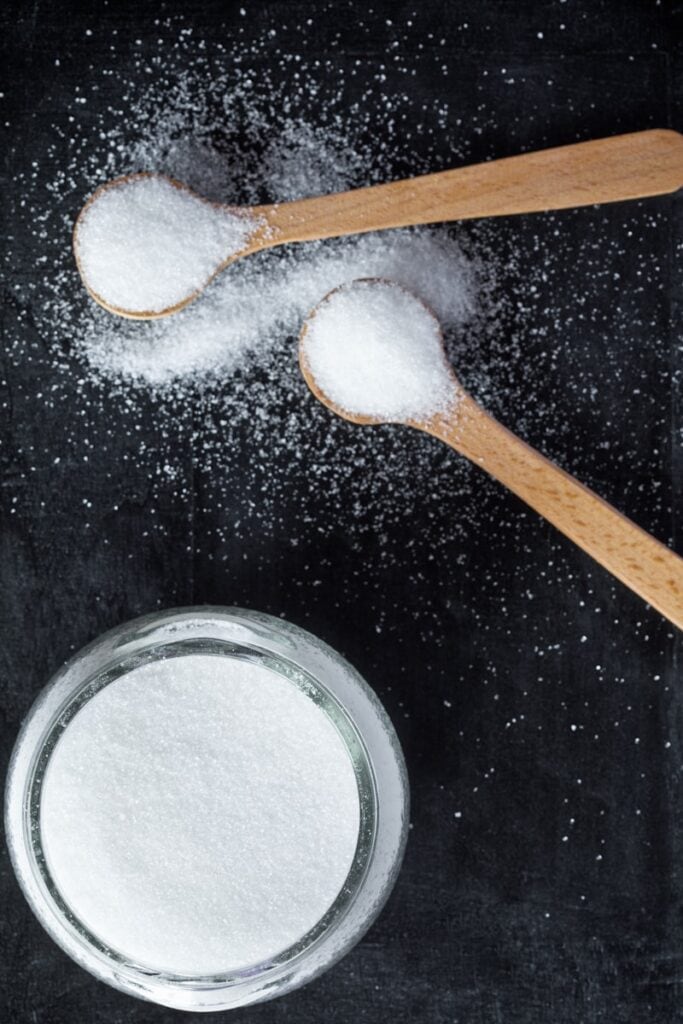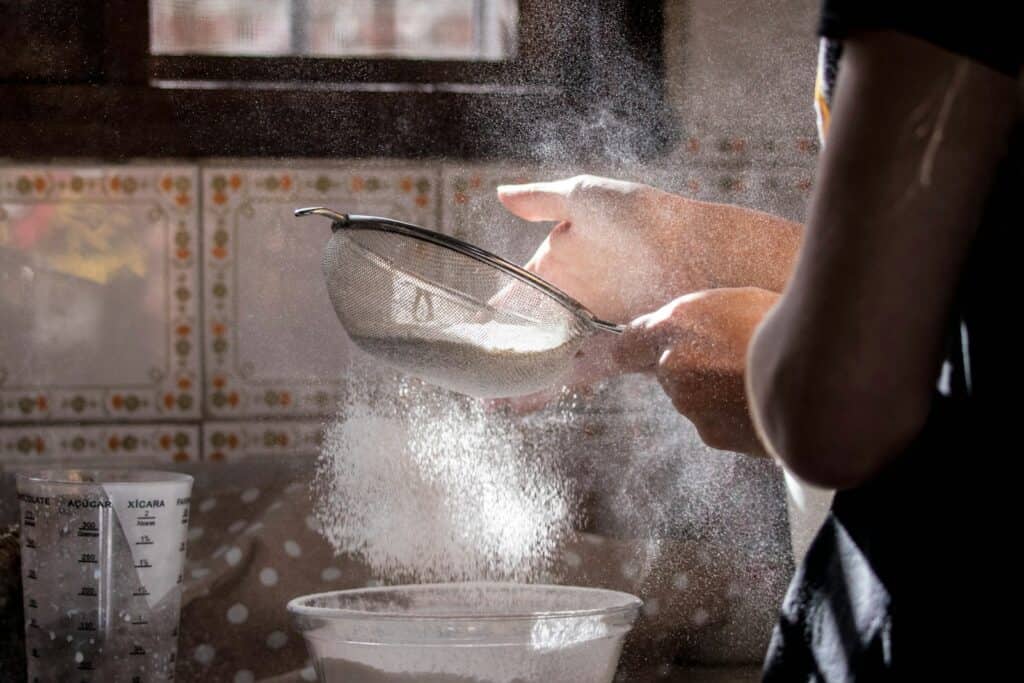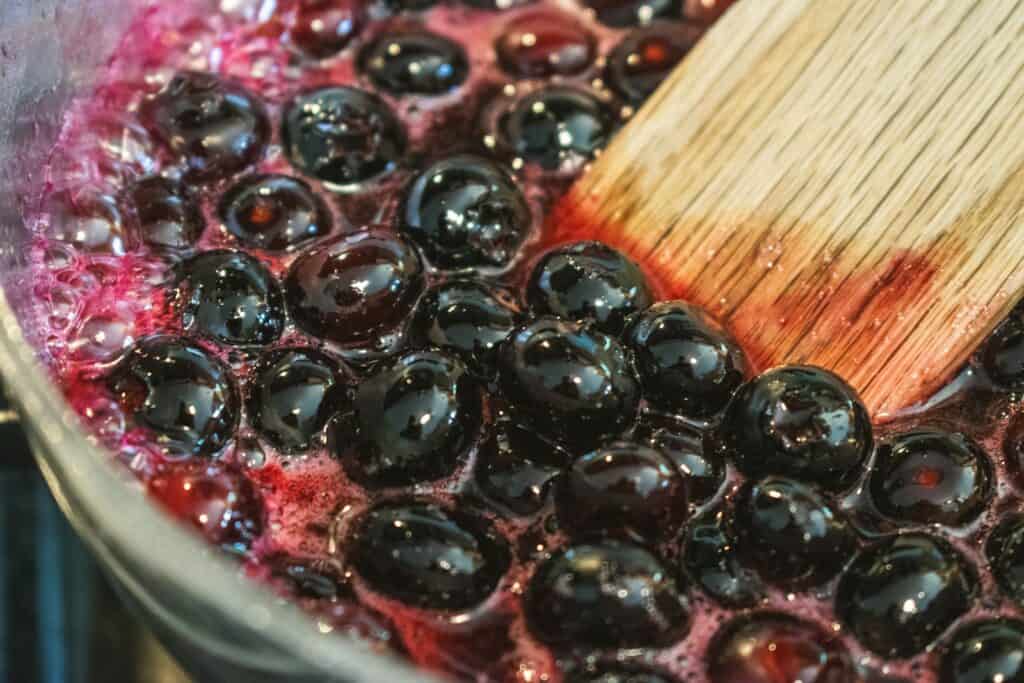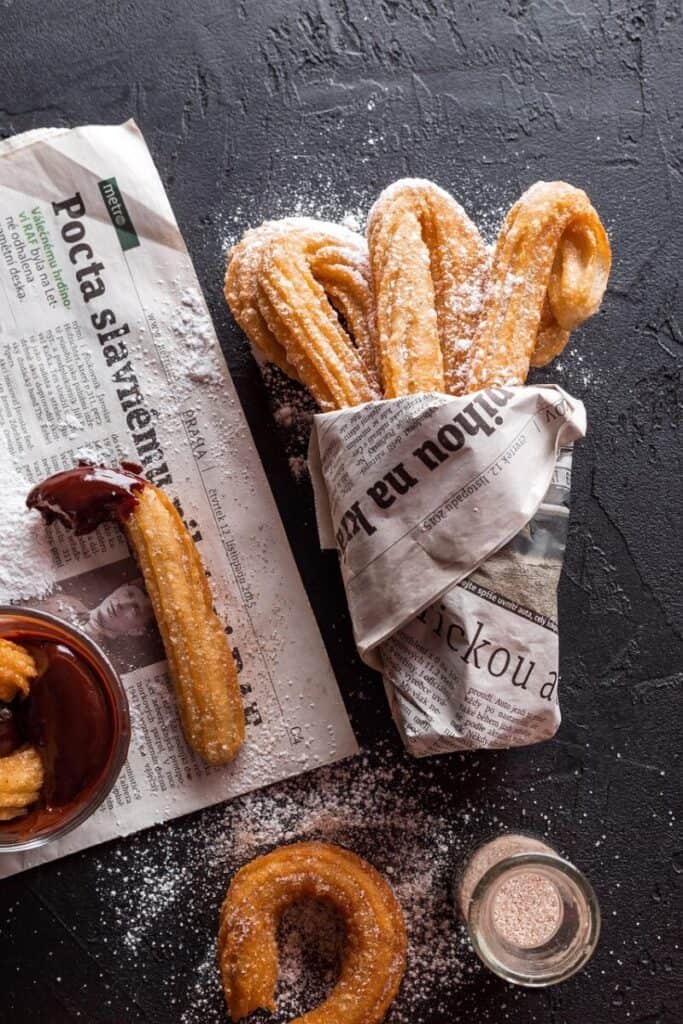Dominar el proceso de cocción del azúcar
El proceso de cocción del azúcar constituye la espina dorsal de la fabricación de caramelos. Es una ciencia precisa. El azúcar y el agua se transforman en innumerables texturas y sabores, desde caramelos blandos a caramelos duros quebradizos.
Comprender este proceso va más allá de seguir recetas. Se controla la temperatura, la cristalización y el tiempo para lograr resultados específicos y repetibles.
Dominar el proceso de cocción del azúcar separa a los aficionados de los profesionales. Permite obtener una producción en cualquier pastelería o confitería cocina. Exploraremos todos los aspectos de esta técnica esencial.
La ciencia del azúcar
El proceso de cocción del azúcar comienza de forma sencilla: se disuelve sacarosa en agua y se calienta. La temperatura aumenta. El agua se evapora. Aumenta la concentración de azúcar.
Este calentamiento también provoca la “inversión”. El calor, a veces ayudado por el ácido, descompone la sacarosa (un azúcar doble) en dos azúcares simples: glucosa y fructosa.
Esta nueva mezcla de sacarosa, glucosa y fructosa se comporta de forma diferente a la sacarosa pura. Resiste mejor la cristalización, lo que es crucial para crear caramelos y salsas suaves.
La cristalización es la tendencia natural del azúcar a organizarse de nuevo en forma sólida y cristalina. El principal objetivo del proceso de cocción del azúcar es controlar cuándo y cómo se produce.
La cristalización incontrolada crea una textura granulosa y desagradable. La cristalización controlada es esencial para los productos como el fondant o el dulce de azúcar, donde los diminutos cristales crean una sensación suave en la boca.
Herramientas esenciales para la precisión
El éxito en el proceso de cocción del azúcar depende de la precisión. Para ello es necesario contar con el equipo adecuado. Ciertas herramientas son absolutamente necesarias para la seguridad y la precisión.
Un cazo de fondo grueso y no reactivo es esencial. Proporciona una distribución uniforme del calor, evitando que se queme y los puntos calientes que arruinan el sirope. El acero inoxidable es excelente.
Un termómetro digital o para caramelos calibrado es su herramienta más importante. Aquí no caben las adivinanzas. Unos pocos grados pueden marcar la diferencia entre un caramelo perfecto y un desastre quemado.
Una brocha de pastelería y un pequeño recipiente con agua limpian las paredes de la sartén. Esta disuelve el azúcar sobrante cristales que podrían caer en el jarabe y provocar una cristalización no deseada.
Las espátulas resistentes al calor, preferiblemente de silicona, se encargan de cualquier removido necesario antes de que hierva el almíbar o después de la cocción.
Por último, tenga cerca un recipiente con agua helada. Esto sirve tanto como medida de seguridad para el tratamiento inmediato de las quemaduras como herramienta para comprobar la consistencia del azúcar: la “prueba del agua fría”.”
Etapas de la cocción del azúcar
El proceso de cocción del azúcar consta de distintas etapas. Cada una corresponde a rangos de temperatura y concentraciones de azúcar específicos. Cada etapa produce una textura diferente al enfriarse.
Controlamos estas etapas con termómetros y las confirmamos con pruebas de agua fría: dejamos caer pequeñas cantidades de jarabe caliente en agua muy fría y observamos las formas que se forman.
Comprender estas etapas es fundamental para crear cualquier dulce a base de azúcar.
Etapa del hilo
Temperatura: 110-112°C (230-235°F)
En esta fase inicial, la concentración de azúcar alcanza alrededor de 80%. Cuando se deja caer de una cuchara, forma finos hilos líquidos.
La prueba del agua fría produce hilos líquidos que no forman bolas. Esta etapa funciona principalmente para glaseados ligeros de frutas y algunos siropes.
Escenario Soft Ball
Temperatura: 112-116°C (235-245°F)
La concentración de azúcar alcanza aproximadamente 85%. Esta es una de las etapas más comunes de la confitería.
Al caer en agua fría, el sirope forma bolas blandas y flexibles que se aplastan al sacarlas del agua. Es la base del dulce de azúcar, los pralinés, el fondant y el merengue italiano.
Etapa de bola firme
Temperatura: 118-120°C (245-250°F)
Con una concentración de azúcar en torno a 87%, el jarabe se vuelve más robusto.
Las pruebas con agua fría forman bolas firmes que mantienen la forma al sacarlas del agua pero siguen siendo moldeables. Esta etapa funciona perfectamente para hacer caramelos blandos y masticables.
Etapa Hard Ball
Temperatura: 121-130°C (250-265°F)
La concentración de azúcar se sitúa ahora cerca de 92%. Queda muy poca agua en el jarabe.
Las pruebas en agua fría producen bolas duras que mantienen la forma y resisten la deformación de los dedos. En esta etapa se fabrican turrones, malvaviscos y caramelos de goma.
Etapa de grietas blandas
Temperatura: 132-143°C (270-290°F)
La concentración de azúcar alcanza alrededor de 95%. El jarabe se vuelve quebradizo.
Al caer en agua fría, se solidifica en hilos flexibles que se doblan antes de romperse. Esta fase es ideal para el toffee y el caramelo de mantequilla.
Etapa de grietas duras
Temperatura: 300-310°F (149-154°C)
Esta es la fase de mayor temperatura para la mayoría de los productos de confitería, con una concentración de azúcar de 99%.
El sirope que se echa en agua fría forma hilos duros y quebradizos que se rompen con facilidad. Ha desaparecido casi toda la humedad. En esta fase se crean caramelos duros, como piruletas, hilaturas de azúcar y esmaltes transparentes.
Más allá del caramelo
Temperatura: 320-350°F (160-177°C)
Más allá de la fase de craqueo duro, el azúcar se descompone y “carameliza”. Pasa de ser transparente a ámbar pálido, luego adquiere un color más intenso y desarrolla un sabor complejo.
No se trata de una etapa definida por la concentración de azúcar, sino por la descomposición térmica de las moléculas de azúcar. Se crea la salsa de caramelo, las coberturas de flan o crema de caramelo y el caramelo quebradizo. Tenga cuidado: más allá de este punto, el caramelo se quema muy rápidamente.
Nombre de la etapa | Temperatura (°F) | Temperatura (°C) | Concentración de azúcar | Aplicaciones clave |
Hilo | 230-235°F | 110-112°C | ~80% | Jarabes, glaseados |
Balón blando | 235-245°F | 112-116°C | ~85% | Fudge, fondant, merengue italiano |
Bola firme | 245-250°F | 118-120°C | ~87% | Caramelos |
Bola dura | 250-265°F | 121-130°C | ~92% | Turrón, malvaviscos |
Grieta blanda | 270-290°F | 132-143°C | ~95% | Toffee, caramelo de mantequilla |
Grieta dura | 300-310°F | 149-154°C | ~99% | Caramelos duros, azúcar hilado |
Caramelo | 320-350°F | 160-177°C | ~100% | Salsas, brebajes, decoración |
Control de la cristalización
El mayor reto en el proceso de cocción del azúcar es evitar la cristalización prematura o no deseada. Un solo cristal perdido puede arruinar todo un lote de sirope.
Utilizamos varias técnicas para garantizar productos finales suaves y sin cristales. En primer lugar, nos aseguramos de que todo el equipo esté impecablemente limpio.
Una vez que el azúcar y el agua se hayan mezclado, remueva sólo hasta que el azúcar se disuelva por completo, antes de que la mezcla hierva. Después de que hierva, no revuelva el jarabe.
La agitación agita las moléculas, animándolas a unirse y formar cristales.
La técnica más importante es limpiar las paredes del cazo con una brocha de pastelería mojada en agua. Así se disuelven los cristales de azúcar que salpican y se evita que vuelvan a caer en el almíbar.
El papel de los agentes interferentes
Más allá de la técnica, utilizamos la química a nuestro favor introduciendo “agentes interferentes”. Estos ingredientes bloquean físicamente o “interfieren” en la formación de grandes cristales de sacarosa.
Los agentes interferentes más comunes son otros tipos de azúcar, como el jarabe de maíz, el jarabe de glucosa o la miel. Estos jarabes contienen largas cadenas de moléculas de glucosa que se interponen en el camino de las moléculas ordenadas de sacarosa.
Los ácidos también son potentes agentes de interferencia. Pequeñas cantidades de zumo de limón o de crémor tártaro aceleran la inversión de la sacarosa en glucosa y fructosa. Esta mezcla de azúcares más diversa resiste naturalmente la cristalización.
Las grasas, como la mantequilla o la nata, también actúan como agentes interferentes. Recubren las moléculas de azúcar, proporcionándoles lubricación e impidiendo físicamente que se unan en rígidas redes cristalinas. Esto es fundamental para obtener una salsa de caramelo suave.
Agente interferente | Tipo | Mecanismo de acción | Usos comunes |
Jarabe de maíz / glucosa | Azúcar invertido | Añade cadenas complejas de glucosa que bloquean físicamente los cristales de sacarosa. | Caramelos, caramelos duros, malvaviscos |
Crema tártara | Ácido | Favorece la inversión del azúcar (de sacarosa a glucosa/fructosa). | Merengue, caramelos duros |
Zumo de limón | Ácido | Favorece la inversión del azúcar, añade sabor. | Sorbetes, glaseados, algunos caramelos |
Mantequilla / Nata | Grasa | Recubre los cristales de sacarosa, impidiendo que aumenten de tamaño. | Caramelos, toffee, dulce de azúcar |
Miel / Melaza | Azúcar invertido | Añade fructosa, glucosa y otros minerales que inhiben la cristalización. | Turrón, caramelos especiales |
Cocinar con azúcar paso a paso
Vamos a esbozar el proceso fundamental de cocción del azúcar. Este método se aplica a la mayoría de las recetas, desde la bola blanda hasta el crack duro.
En primer lugar, mezcla el azúcar, el agua y cualquier agente que pueda interferir (como el sirope de maíz) en un cazo de fondo grueso. Utiliza el agua suficiente para que el azúcar tenga la consistencia de arena mojada. Para obtener más información sobre las proporciones de los ingredientes, consulte un recurso de confianza como Instituto Culinario de América.
Poner la sartén a fuego medio-alto. Remover suavemente con una espátula resistente al calor sólo hasta que el azúcar se disuelva por completo. Este paso es crucial: los cristales no disueltos sembrarán otros nuevos más tarde.
Cuando el azúcar se disuelva y el almíbar esté transparente, dejar de remover completamente. Llevar la mezcla a ebullición.
Cuando empiece a hervir, utilice una brocha de pastelería humedecida en agua para eliminar los cristales de las paredes de la sartén. Repita esta operación tantas veces como sea necesario durante la fase inicial de ebullición.
Introduzca con cuidado el termómetro para caramelos. Asegúrese de que la punta esté sumergida en el almíbar, pero sin tocar el fondo de la sartén, lo que daría falsas lecturas altas.
Deje que el almíbar cueza, sin removerlo, hasta que alcance la temperatura precisa que requiera su receta para la fase deseada.
Una vez alcanzada la temperatura deseada, retire inmediatamente la sartén del fuego. El proceso de cocción puede detenerse definitivamente sumergiendo el fondo de la sartén en un fregadero con agua fría durante unos segundos.
Continúe con la receta, ya sea enfriando, añadiendo otros ingredientes como mantequilla y nata, o vertiendo el sirope en moldes.
La seguridad no es negociable
Trabajar con el proceso de cocción del azúcar exige el máximo respeto y precaución. El jarabe de azúcar caliente está mucho más caliente que el agua hirviendo y puede provocar quemaduras graves y profundas.
Lleva siempre manga larga y calzado cerrado. Mantenga siempre un recipiente con agua helada al alcance de la mano. En caso de quemaduras, sumergir inmediatamente la zona afectada en agua helada es el primer auxilio más eficaz.
Nunca deje el azúcar en cocción sin vigilancia. La temperatura puede subir muy rápidamente, sobre todo en las etapas más altas. Perfectamente puede quemarse en segundos.
Manipule el cazo caliente y el sirope con sumo cuidado. Cuando añada líquidos como nata al sirope caliente, hágalo despacio y con cuidado, ya que la mezcla burbujeará violentamente. Calentar previamente la nata puede reducir la intensidad de esta reacción.
Asegúrese de que los niños y los animales domésticos permanezcan alejados de la zona de cocción.
Aplicaciones en pastelería
La versatilidad del proceso de cocción del azúcar se pone de manifiesto en el vasto mundo de dulces que ayuda a crear.
El merengue italiano se elabora vertiendo azúcar cocido a punto de nieve sobre claras de huevo batidas. El calor cuece las claras, creando un merengue estable y brillante perfecto para cubrir tartas o hacer macarons.
Los caramelos masticables se basan en una precisa fase de bola firme, combinada con mantequilla y nata añadidas para obtener un rico sabor y una textura suave.
Los caramelos duros, como las piruletas y las galletas vidriera, necesitan almíbar para alcanzar la fase de craquelado duro. En este punto, el azúcar enfriado es quebradizo y vidrioso.
El azúcar hilado, una decoración delicada e impresionante, también se elabora a partir de jarabe de craquelado duro, que se lanza desde un tenedor o batidor para crear finos hilos.
Incluso la base de muchos postres helados, como el sorbete, comienza con un sirope simple cocido mediante un proceso básico de cocción del azúcar para garantizar un producto final suave y no picante. Para más ideas de recetas, explore archivos profesionales como King Arthur Baking.
Resolución de problemas comunes
Incluso con una ejecución cuidadosa, pueden surgir problemas. Entender por qué ocurren es clave para solucionarlos y evitarlos en el futuro.
Si el jarabe cristaliza y se vuelve granuloso, la causa casi siempre es un cristal perdido. Puede deberse a azúcar sin disolver al principio, a cristales en las paredes del cazo o a la agitación al remover. Empiece de nuevo, asegurándose de que el cazo está limpio y de que lava las paredes.
Si su el caramelo es demasiado blando, significa que el sirope estaba poco hecho. No ha alcanzado la temperatura correcta, por lo que su contenido en agua es demasiado alto. La única solución es utilizar un termómetro fiable y cocinar a la temperatura deseada.
Por el contrario, si el caramelo es demasiado duro o quebradizo, estaba demasiado cocido. La temperatura superó el objetivo para la fase deseada, lo que provocó un menor contenido de agua. La precisión es la clave.
Si su salsa de caramelo se separa o se vuelve grasienta, suele significar que la grasa (de mantequilla o nata) se ha añadido demasiado rápido o a una temperatura incorrecta, lo que ha provocado que la emulsión se rompa. Añada la grasa y los líquidos lentamente y fuera del fuego.
Problema | Causa probable | Solución |
Jarabe granuloso o cristalizado | Cristales de azúcar desprendidos de las paredes del cazo, azúcar sin disolver o remover después de hervir. | Volver a empezar. Asegúrese de que todo el azúcar esté disuelto antes de hervir. Limpiar las paredes de la olla. No remover después de hervir. Utilizar un agente de interferencia. |
El caramelo final es demasiado blando | El sirope estaba poco hecho; no alcanzó la temperatura deseada. | Vuelva a comprobar la calibración del termómetro. Cocine el sirope con precisión a la temperatura especificada en la receta. |
El caramelo final es demasiado duro | El jarabe estaba demasiado cocido; la temperatura superaba el objetivo. | Retire la sartén del fuego inmediatamente después de alcanzar el objetivo. Un breve baño de hielo puede detener la cocción. Vigile de cerca la temperatura. |
La salsa de caramelo es grasienta/separada | Se ha roto la emulsión. La grasa/líquido se ha añadido demasiado rápido o cuando el sirope estaba demasiado caliente. | Añadir la nata/mantequilla poco a poco y fuera del fuego. Batir constantemente para emulsionar. A veces se puede guardar recalentando suavemente y batiendo. |
Azúcar quemado | Cocinado durante demasiado tiempo o a fuego demasiado alto. Puntos calientes en la sartén. | Desechar y volver a empezar. Utilice una cacerola de fondo grueso para que el calor sea uniforme. Observe atentamente el color y el olor del sirope a medida que se acerca a la fase de caramelo. |
El camino hacia la maestría
Dominar el proceso de cocción del azúcar es un viaje de precisión, paciencia y práctica. Se trata de algo más que de calor: se trata de controlar una reacción química.
Comprendiendo la ciencia de la cristalización, utilizando las herramientas adecuadas y respetando las distintas fases de temperatura, se gana control sobre el producto final. Cada lote se convierte en un ejercicio de precisión, no en un juego de azar.
Le animamos a que experimente, empezando por etapas más sencillas como la bola blanda para el dulce de azúcar y avanzando hasta la más exigente de crack duro para las piruletas. Tome notas detalladas. Confíe en su termómetro. Dé prioridad a la seguridad.
Con estos conocimientos, el proceso de cocción del azúcar pasa de ser un reto intimidatorio a una técnica fiable y versátil en su arsenal culinario. Aprenda técnicas más avanzadas en una institución profesional como la Instituto de Educación Culinaria.
- Artes culinarias y repostería - The Culinary Institute of America https://www.ciachef.edu/
- Ciencia y recetas de repostería - King Arthur Baking https://www.kingarthurbaking.com/
- Enseñanza culinaria profesional - Instituto de Enseñanza Culinaria https://www.ice.edu/
- Ciencia y Tecnología de los Alimentos - IFT (Instituto de Tecnólogos de los Alimentos) https://www.ift.org/
- Dulcería y confitería - Wikipedia https://en.wikipedia.org/wiki/Candy_making
- Técnicas culinarias - Serious Eats https://www.seriouseats.com/
- Pastelería Profesional - Escuela Francesa de Pastelería https://www.frenchpastryschool.com/
- Química de los alimentos y cocina - ScienceDirect https://www.sciencedirect.com/topics/food-science/sugar
- Normas de panadería y pastelería - American Culinary Federation https://www.acfchefs.org/
- Ciencias culinarias - Harvard Science & Cooking https://www.seas.harvard.edu/cooking









